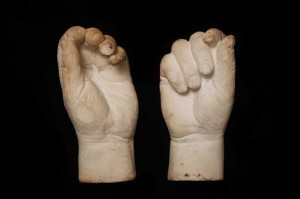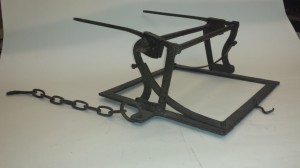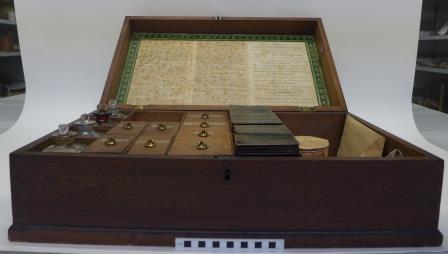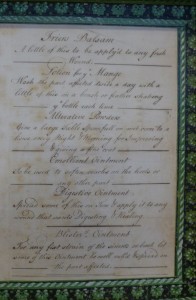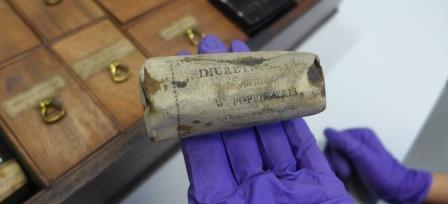Written by Emma Tin, a Work Experience student from the Abbey School.
During my week of work experience, my task was to learn from the museum and archives at the MERL and to convey what I have learnt to the staff working on an archive exhibition at my school. The Abbey School in Reading has its 130th anniversary this year and, after I have completed my work experience here, I hope to become part of the student think tank providing ideas for the exhibition.
Among the opportunities given to me that week the key events, for me, were working in the archives, meeting with the exhibition organisers, working as a student explainer, helping at the front desk and attending a ‘Reminiscence’ session. The aim of this session was to talk to people suffering from the early stages of dementia about aspects of the past and to revive old memories by examining a few items from the museum’s collection. Each of these sessions were rewarding and enriching in their own different ways and, by the end of the week, I had been able to see most parts of the museum and archives.

The office where I was able to write notes and reflect on the past week
The key lessons I learned from talking to the exhibition organisers was that, when creating an exhibition
- It is important to think practically and find the best way to use the exhibition space.
- Allow enough time to properly organise the exhibition because ordering personalised posters and placards will take a while.
- Make sure that all the items selected fit under one main theme. It is important not to allow random objects to become part of the exhibition. Otherwise, it will be confusing.
- Communication between the different groups of people involved in the project is essential.
- Good planning and organisation from the start is important because all the items in the exhibition will need to be properly preserved and documented.
- Use a good documentation system so that the museum has the potential to expand and to prevent the development of a massive backlog of undocumented items from growing.
- Might be a good idea to have rooms for displaying the history of the school and then to have a spare room for museum records so that any visitor can discover how the collection grew and developed.
Practical challenges – Visiting the exhibition site
On the first day, I had the chance to see the exhibition space at my school. After this, I realised that there were several practical challenges:
- The display would have to be flexible and easy to move because the display room was needed for multiple purposes.
- Due to a tight budget, the cost would need to be kept down. This meant that expensive display cases are not really feasible.
- There were lots of items available to use in the school archive, therefore, it was necessary to select the best few items for the display.

Having the chance to explore and tour members of the public around the museum was a one of the highlights of the week.
Communication
The most challenging aspect of organising a museum exhibition is involving the different groups of people working on it. Social media is a brilliant way of co-ordinating team effort.
There are many apps that can be used to be to motivate and energise a large group of people but some examples could be Facebook Messenger, WhatsApp and Trello.
Trello is probably the best app to use because you can clearly issue instructions and verify that each member of the team is completing their work. In addition, it is also possible to focus on long term aims (e.g. five years on) and short term aims (e.g. the jobs which need to be completed during the week).
What have I taken away from my week of Work Experience?
Overall, I learnt that there are four main factors that need to be taken into account when creating an exhibition: public tastes, the interpretation, objects in the archive and the space provided. Any decision made should take in a combination of these factors into account.
Having the opportunity to explore the archives and exhibition was both interesting and enjoyable.
In September, I hope to relay what I have learnt and to become part of the student think taking giving advice to the co-ordinators of the new museum exhibition.

The Earley Charity Learning Studio. Helping in a session focusing on memories of the past really helped me to appreciate that museums are an integral part of our community, helping charities, schools, universities and hospitals.


